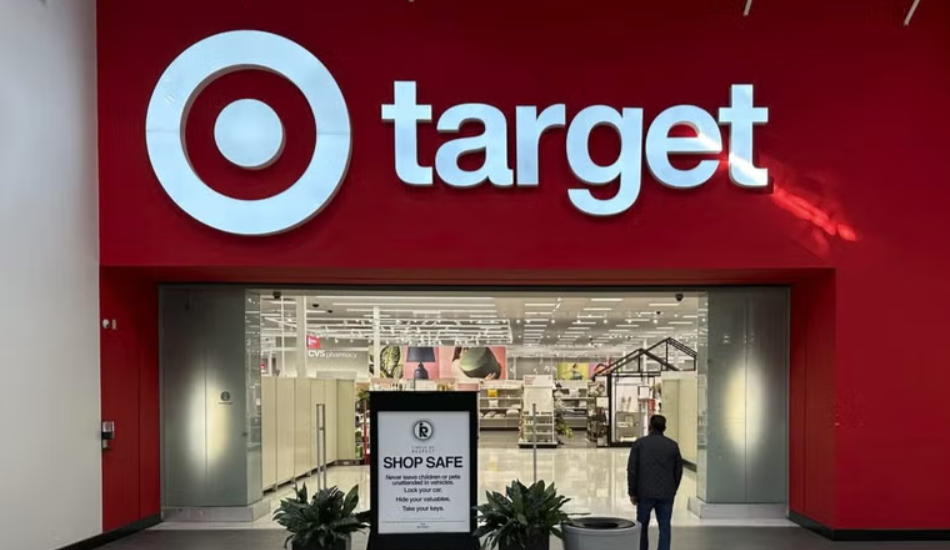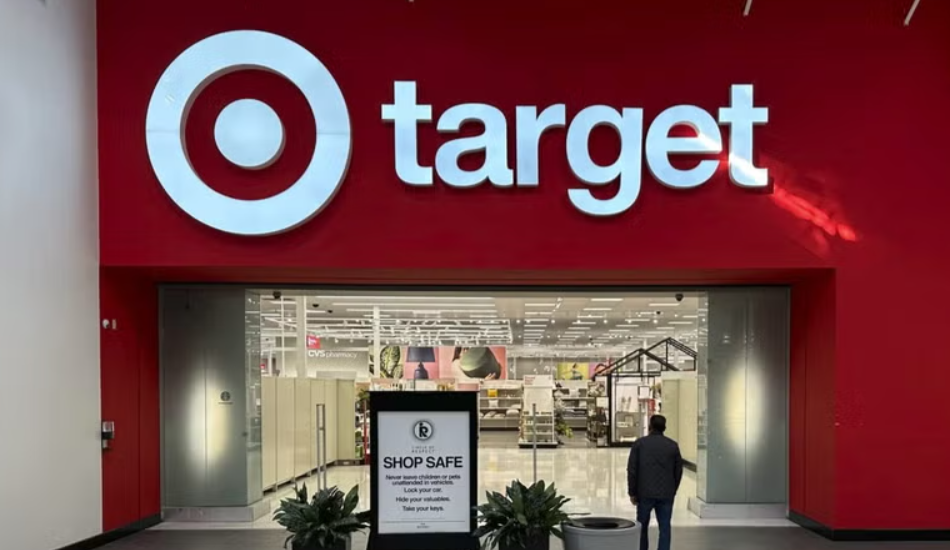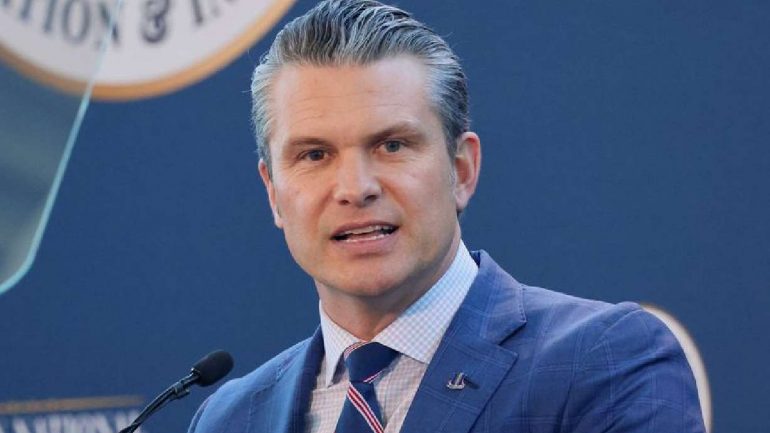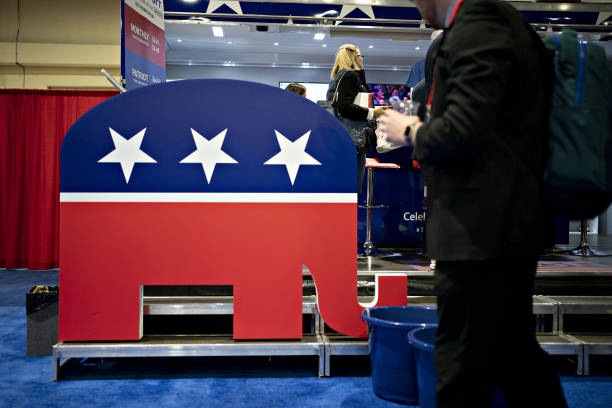-
 play_arrow
play_arrow
Praise 24/7 NO Today's Best Gospel
Target Cuts 1,800 Corporate Jobs Amid Stagnant Sales and Leadership Change.

(ThyBlackMan.com) Target Corporation’s decision to cut 1,800 corporate jobs—its largest reduction in a decade—represents far more than a belt-tightening maneuver by a Fortune 100 retailer. It’s a statement about the state of American consumerism, corporate adaptation, and the pressures facing even the most iconic brands as the post-pandemic economy shifts beneath their feet. The Minneapolis-based company, long hailed as the retailer that balanced affordability with style, is now grappling with four years of stagnant sales, shrinking profit margins, and a changing consumer base that’s moving away from discretionary spending. In an internal memo sent to employees, incoming CEO Michael Fiddelke framed the layoffs as a step toward simplicity, agility, and growth. But politically and economically, the move signals a deeper reckoning for U.S. corporations navigating inflation, shifting labor expectations, and the new cost structures of doing business in the 2020s.

Target’s decision arrives at an inflection point for both the company and the American economy. Inflation has cooled from its 2022 highs but remains persistent enough to pinch the purchasing power of middle-income households—the very demographic that forms the backbone of Target’s customer base. While discount retailers like Walmart have leaned heavily into groceries and essentials, Target’s product mix—roughly half discretionary goods like home décor, apparel, and electronics—makes it more vulnerable to consumer hesitation. When shoppers tighten their belts, the first things they cut are not the necessities but the extras that make Target’s aisles appealing: the new throw pillow, the seasonal décor, or the impulse beauty product picked up during a Saturday run. Those subtle shifts in spending behavior cascade into multi-billion-dollar consequences. For a company that has spent the past decade emphasizing “affordable aspiration,” the current economy challenges that very model.
The 1,800 job eliminations—comprising 1,000 layoffs and 800 unfilled positions that will be permanently removed—represent approximately eight percent of Target’s corporate workforce. Though the company emphasized that no store or supply-chain roles will be affected, the symbolic weight of these cuts cannot be understated. It marks the first significant reduction since the early 2010s, when Target was still recovering from its failed expansion into Canada. This time, however, the culprit isn’t international overreach but domestic stagnation. The layoffs are a direct consequence of a company caught between competing forces: the need to invest in technology and logistics while appeasing investors demanding profitability and growth in a tight consumer market.
The internal memo from Fiddelke is textbook corporate restructuring language—strategic but sober, acknowledging “the complexity we’ve created over time” and promising to “simplify how we work.” Yet beneath that polished phrasing lies an unspoken truth about the modern retail economy. Complexity, in Target’s case, isn’t just bureaucratic layering; it’s the byproduct of an American corporation trying to be everything at once: a discount retailer, a digital innovator, a fashion-forward lifestyle brand, and a socially conscious employer. When those ambitions collide with slower growth and investor impatience, the result is often a contraction dressed in euphemism.
From a political-economic perspective, Target’s layoffs mirror a broader recalibration occurring across corporate America. After a pandemic-fueled hiring surge and record profits during the 2020-2021 retail boom, many companies are now adjusting to normalized demand. The Federal Reserve’s aggressive interest-rate hikes have cooled borrowing and spending, and middle-class consumers—the engine of retail—are carrying record levels of credit-card debt. Corporate America’s honeymoon with cheap capital is over. For firms like Target, which invested heavily in e-commerce infrastructure, same-day delivery logistics, and digital operations during the pandemic, the return on those investments has been slower than anticipated. Fiddelke’s “Enterprise Acceleration Office,” launched earlier this year, was designed to find efficiencies and modernize operations. The resulting layoffs are the first tangible sign of that initiative’s cost-cutting muscle.
Politically, the decision underscores the tension between corporate stewardship and economic optics. Mass layoffs from a household-name company during a time of “stable” employment numbers can undercut the narrative of economic resilience touted by policymakers. Even as unemployment hovers near historic lows, these cuts feed into the perception that the post-pandemic recovery is bifurcated—solid for executives and shareholders, fragile for white-collar employees whose roles are increasingly viewed as redundant in the era of automation and AI integration. Target’s decision to have all U.S. headquarters employees work from home the week layoffs are announced is a subtle but telling choice—a measure to contain internal disruption, but also a reflection of how remote work culture has made corporate downsizing easier to implement and emotionally distance.
In many ways, Target’s predicament reveals the paradox of success in the modern economy. The company was once celebrated as the anti-Walmart—more stylish, more progressive, more urban-friendly. Yet that identity now poses structural risks. Roughly half of Target’s revenue stems from discretionary spending, compared to 40 percent at Walmart. That 10-point gap, small on paper, represents billions in lost insulation against inflationary trends. When groceries and household goods dominate the market basket, companies enjoy built-in demand stability. Target’s heavier reliance on fashion, furniture, and seasonal items exposes it to volatility tied to consumer confidence. Economists often describe this as the “elastic middle”—the section of the retail market most sensitive to macroeconomic mood swings. Target has built its empire in that middle, and as inflation and interest rates reshape spending priorities, it’s finding that middle harder to hold.
From a governance standpoint, these layoffs coincide with a major leadership transition. Michael Fiddelke, set to assume the CEO role on February 1, succeeds Brian Cornell, who steered the company through nearly a decade of both expansion and turbulence. Cornell’s tenure brought digital transformation and record revenue years, but also controversies—ranging from supply-chain breakdowns to public backlash over social and cultural issues. Fiddelke, a company insider who has served as both CFO and COO, inherits a brand that remains culturally relevant but operationally burdened. His dual background in finance and operations positions him as a pragmatist rather than a visionary—a leader likely to focus on cost discipline and structural simplification rather than grand reinvention. The layoffs, then, become an early indicator of his management philosophy: a willingness to make unpopular but necessary cuts to restore efficiency and investor confidence.
Economically, Target’s retrenchment speaks to a larger shift in corporate strategy across industries. After a decade in which growth was prioritized over profit, public markets are once again rewarding fiscal restraint. Target’s shares have fallen 65 percent since their 2021 peak, while Walmart’s have soared 123 percent over the same period. That divergence reflects not only differences in product mix but also investor perception of risk and resilience. Walmart’s grocery-heavy model acts as a hedge against economic downturns, while Target’s emphasis on home goods and lifestyle products ties its fortunes more closely to discretionary income trends. Investors, reading the tea leaves, have shifted capital accordingly. The layoffs may therefore be less about immediate financial necessity and more about signaling to Wall Street that Target is serious about “operational discipline” in an uncertain market.
Behind the headlines, however, lies the human dimension often missing from corporate press releases. The 1,000 employees being laid off—many of whom likely built their careers at Target’s Minneapolis headquarters—represent not just cost centers on a spreadsheet but the institutional memory and creative fabric of a company known for its culture of design and innovation. Severance packages and pay continuation until January 3 offer temporary relief, but the psychological toll of mass layoffs, especially ahead of the holiday season, reverberates throughout corporate America. Economists have long noted that layoffs among white-collar workers tend to depress local economies more acutely than equivalent losses in lower-wage sectors, because they reduce discretionary spending and weaken community confidence. For Minneapolis, a city still recovering from the social and economic upheavals of the past five years, Target’s cuts land like a fresh bruise.
The politics of perception surrounding the decision are equally complex. Target has been navigating culture-war crossfire over the past two years, including backlash to its Pride Month merchandise and criticism from both conservative activists and progressive customers. While the company insists these layoffs are purely economic, it’s impossible to separate business from politics in an age when corporate identity has become a proxy battlefield for cultural values. Shareholders demanding better margins are often the same voices urging companies to avoid political controversy. In that context, the layoffs could be seen as an effort to depoliticize operations, streamline messaging, and pivot back to the fundamentals of retail execution. But that too is a political act—one that signals to investors that Target intends to prioritize stability over symbolism.
For policymakers and economists, the Target case serves as a microcosm of the structural forces reshaping the American labor market. Corporate layoffs are no longer confined to failing industries; they are increasingly a feature of healthy companies seeking to preempt downturns. The rise of automation, cloud computing, and algorithmic analytics has made many mid-level management and data roles redundant. Companies that once relied on human oversight are finding that digital infrastructure can now replicate or outperform large chunks of white-collar work. Fiddelke’s emphasis on accelerating technology “to enable our team and delight our guests” may sound innocuous, but it carries a deeper meaning: human labor is being displaced by efficiency tools, and the modern corporation is learning to do more with fewer people. Economists call this “labor-light productivity”—a model in which growth is achieved not through job creation but through technological substitution. Target’s restructuring is a vivid example of that evolution.
In broader economic terms, the layoffs also reflect a subtle but significant rebalancing of corporate priorities. During the height of the pandemic, U.S. corporations were flush with cash, aided by low interest rates and surging demand for goods. That era enabled unprecedented wage growth and expanded hiring, particularly in tech and retail. But as the Federal Reserve tightened monetary policy and borrowing costs rose, the calculus changed. Corporate America now faces an environment where capital is expensive, consumers are cautious, and inflationary pressures continue to erode real profits. The political implications of this shift are profound. It challenges the Biden administration’s narrative of “Bidenomics” delivering sustainable middle-class growth. When a company as emblematic as Target announces mass layoffs, it feeds into opposition arguments that the current economic expansion is fragile, uneven, and overly dependent on government stimulus rather than organic productivity.
From a competitive standpoint, Target’s retrenchment offers a cautionary tale about strategic positioning in the retail sector. The company’s success in the 2010s was built on a unique synthesis of chic branding and mass-market accessibility—a formula that resonated with millennial and Gen-Z shoppers. But as those consumers age and confront inflation, student debt, and housing costs, their loyalty is no longer guaranteed. Younger shoppers increasingly favor thrift stores, online resale markets, and niche direct-to-consumer brands that promise authenticity over corporate polish. Target’s challenge is to reinvent its value proposition without alienating its existing customer base. That’s no small feat in an era when brand identity is scrutinized across social media in real time.
The layoffs, then, are part of a broader re-engineering of Target’s organizational DNA. Fiddelke’s memo highlights a shift toward “faster execution” and “sharper priorities”—phrases that, in the corporate lexicon, often precede deeper cultural transformation. Streamlining may begin with job cuts, but it rarely ends there. Expect to see further consolidation of departments, increased reliance on automation in logistics and marketing, and a renewed emphasis on core categories such as home essentials, apparel, and digital retail integration. Politically, this repositioning could reestablish Target as a symbol of Midwestern pragmatism rather than progressive experimentation—a return to retail fundamentals after years of brand activism.
In economic terms, the move also reflects the waning of the “Great Resignation” era and the arrival of what analysts call the “Great Rebalancing.” Between 2020 and 2022, labor shortages gave employees unprecedented leverage. Companies offered remote work, signing bonuses, and flexible policies to attract talent. But as markets cooled, that leverage shifted back toward employers. Target’s layoffs exemplify this reversal. The message to the workforce is clear: the age of corporate excess is over, and adaptability is the new job security. Economists may celebrate this as a natural market correction, but politically, it exposes the fragility of the middle class and the illusion of permanent upward mobility through corporate employment.
Still, Target’s move is not purely defensive. It’s also a preemptive play to reassert long-term competitiveness. In his memo, Fiddelke outlines three strategic imperatives: leading with merchandising authority, elevating the guest experience, and accelerating technology. Each of these pillars aligns with broader economic trends. The first—merchandising authority—reflects the shift toward vertical integration, where companies rely less on third-party brands and more on proprietary labels to control margins. The second—guest experience—acknowledges the consumer demand for frictionless, personalized retail interactions, a realm increasingly defined by AI-driven analytics. The third—technological acceleration—illustrates the new frontier of digital infrastructure investment. Together, these priorities form the blueprint of a modernized Target: leaner, more automated, and more data-driven.
Critically, the layoffs underscore how corporate America is redefining “efficiency” in the 2020s. In previous decades, efficiency meant outsourcing labor to cheaper markets or cutting supply costs. Today, it means restructuring entire corporate hierarchies around technology and agility. The elimination of 1,800 roles at Target’s headquarters is part of this paradigm shift. It’s not simply about reducing payroll expenses—it’s about redesigning how decisions are made, how data flows, and how quickly innovation can move from concept to execution. Fiddelke’s reference to “too many layers and overlapping work” is a recognition that the bureaucratic sprawl of large corporations, once seen as a symbol of strength, has become a drag on speed and creativity. Streamlining, in this context, is less about austerity and more about survival in a hyper-competitive, tech-driven economy.
From an investor’s lens, the layoffs could help Target regain credibility. Wall Street has been unforgiving toward companies that miss earnings targets or show sluggish growth. Target’s 41-percent stock decline over the past five years stands in stark contrast to Walmart’s gains. By cutting costs and simplifying operations, Target hopes to send a message that it is serious about restoring shareholder value. Yet this approach carries risk. Layoffs can demoralize remaining employees, disrupt institutional knowledge, and weaken internal cohesion. The short-term boost to the balance sheet may come at the expense of long-term innovation. Economists often refer to this as “efficiency fatigue,” where over-optimization erodes resilience. Target’s challenge will be to strike a balance between fiscal prudence and creative renewal.
In the political arena, corporate downsizing on this scale invariably sparks debate about the social contract between business and labor. Target, once celebrated for its employee benefits and community engagement, now faces scrutiny over whether its restructuring aligns with its stated values. While the company has promised severance and extended pay, critics argue that mass layoffs contradict the brand’s professed commitment to people-first culture. Progressive economists view such actions as symptomatic of a broader trend in which corporations prioritize shareholder returns over workforce stability. Conservative analysts, on the other hand, may interpret the cuts as a healthy exercise in market discipline. This ideological divide reflects the ongoing debate about capitalism’s moral boundaries—a debate that Target, willingly or not, has re-entered.
What makes this moment particularly consequential is that Target’s move is likely to influence other retailers. When an industry leader acts, others follow. Competitors like Kohl’s, Macy’s, and even digital giants like Amazon monitor these decisions closely. If Target’s stock rebounds post-layoffs, expect similar “organizational simplifications” elsewhere. In that sense, Target’s decision may mark the beginning of a broader corporate correction across the U.S. retail sector. Such cascading layoffs could, in aggregate, affect consumer confidence, local tax bases, and even municipal politics in cities dependent on corporate headquarters for revenue and identity.
Ultimately, Target’s layoffs tell a story about the American economy in miniature: a system perpetually balancing growth with contraction, innovation with inequality, and optimism with austerity. The 1,800 eliminated roles are both a symptom and a signal—a symptom of consumer slowdown, and a signal to investors that corporate America is recalibrating for a leaner, less forgiving future. Whether that future delivers stability or merely a new cycle of boom and bust will depend on how companies like Target navigate the delicate equilibrium between human capital and technological efficiency.
For now, Target’s strategy is clear. Fiddelke’s memo sets a tone of disciplined realism, acknowledging the pain of layoffs while framing them as a necessary evolution. “It will be difficult,” he wrote, “and it’s a necessary step in building the future of Target.” That sentence, stripped of corporate gloss, captures the paradox of modern capitalism: progress built on sacrifice. The question is whether those sacrifices will yield a stronger company—or simply another cautionary tale in the long history of American retail’s rise, fall, and reinvention.
Staff Writer; L.L. McKenna
Politics explained through the lens of justice and equity. Offering perspective that informs, challenges, and empowers.
One can contact this brother at; LLMcKenna@ThyBlackMan.com.
Written by: Black Gospel Radio
Similar posts
-

D.K. Smith
For every Show page the timetable is auomatically generated from the schedule, and you can set automatic carousels of Podcasts, Articles and Charts by simply choosing a category. Curabitur id lacus felis. Sed justo mauris, auctor eget tellus nec, pellentesque varius mauris. Sed eu congue nulla, et tincidunt justo. Aliquam semper faucibus odio id varius. Suspendisse varius laoreet sodales.
close Top popular

The Science of Happiness – Exploring Factors for Well-Being

Balancing Act: Prioritizing Your Well-Being in a Busy World

Overcoming Procrastination – Strategies for Productivity and Success

Unlocking Hidden Potential – A Guide to Personal Growth

Mindful Living – Cultivating Presence in the Modern Era

CONTACT US
- info@praise247no.com
FOLLOW US
- Praise247NO
- Praise247NO
- Praise247NO
Copyright 2024 Praise247no.com - All Rights Reserved.




Post comments (0)